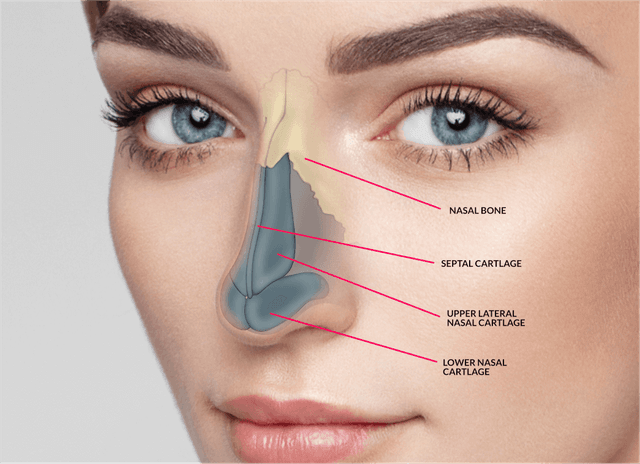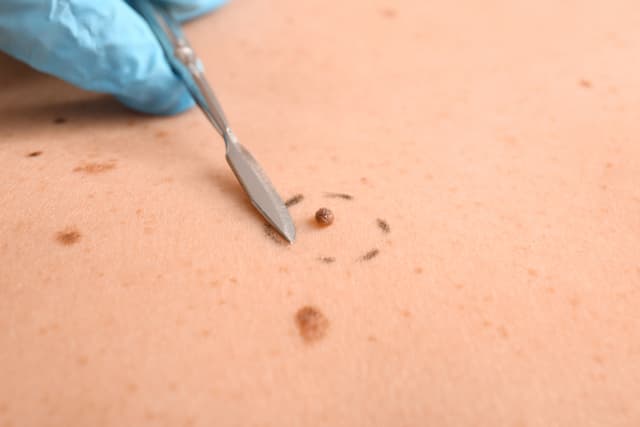Welcome to the Mole Masterclass with Dr. Farhad Ardesh, affectionately known as The Beauty Mark Doctor TM. Renowned for his expertise in mole removals and skin health, Dr. Ardesh is a trusted choice for anyone searching for mole removal near you. In this episode, we’ll dive into the importance of skin cancer testing and how to identify potentially concerning moles using the trusted ABCDE Rule.
Why Skin Cancer Testing Matters
Moles are a common part of life—most are completely harmless and even considered beauty marks. However, in some cases, they can be a warning sign of something more serious. That’s why Dr. Ardesh takes a meticulous approach with every patient. At his practice, every mole removed is sent for skin cancer testing.
This proactive step ensures that nothing is overlooked. Even if a mole looks benign, testing provides peace of mind, catching any issues early before they become serious. As Dr. Ardesh says, “When it comes to your health, it’s always better to be safe than sorry.”
The ABCDE Rule: Your Guide to Spotting Suspicious Moles
Not sure what to watch out for? The ABCDE Rule is a simple yet powerful tool to monitor changes in your moles. Here’s what it stands for:
-
A: Asymmetry
Does one half of the mole look different from the other? If a mole is uneven, it could be cause for concern.
-
B: Borders
Are the edges jagged, irregular, or blurry? Moles with undefined or rough borders should be checked by a professional.
-
C: Color
Does the mole have multiple colors or look patchy? Uneven color distribution—especially shades of black, brown, red, or white—can signal a need for further evaluation.
-
D: Diameter
Is the mole larger than a pencil eraser? While size alone isn’t a definitive sign, moles of this size warrant extra attention.
-
E: Evolving
Is the mole changing in size, shape, or color over time? Any evolution in a mole's appearance is a key indicator that it’s time to consult The Mole Doctor TM for a professional evaluation.
Meet the Mole Doctor TM: Dr. Ardesh’s Guide to Skin Cancer Testing
Welcome to the Mole Masterclass with Dr. Farhad Ardesh, affectionately known as The Mole Doctor TM. Renowned for his expertise in mole removals and skin health, Dr. Ardesh has earned his reputation as the go-to expert for safe, effective, and thorough mole care. Whether you're looking to remove a mole for cosmetic reasons or you're concerned about skin health, The Mole Doctor TM is here to guide you every step of the way.
In this episode of his Mole Masterclass, Dr. Ardesh emphasizes the importance of early detection when it comes to mole health. While most moles are completely harmless, a small percentage can be indicative of skin cancer. That’s why The Mole Doctor TM sends every mole he removes for skin cancer testing, giving his patients peace of mind and confidence in their care.
Why Skin Cancer Testing Matters
Moles might be a natural part of your skin, but monitoring them is essential. Many people underestimate the importance of staying vigilant about their moles. Dr. Ardesh explains, “Even if a mole looks harmless, we never take chances. Testing every mole ensures we catch any potential issues early, and that’s a step I believe everyone deserves in their care.”
This proactive approach isn’t just about medical precision—it’s about empowering patients to take control of their skin health. Early detection of skin cancer dramatically increases the chances of successful treatment, making regular check-ups with The Mole Doctor TM a vital part of a healthy skincare routine.
The ABCDE Rule: A Tool for Everyone
How can you monitor your moles at home? The Mole Doctor TM recommends the ABCDE Rule, a simple yet effective way to keep an eye on potentially suspicious moles:
-
A: Asymmetry
Does one half of the mole look different from the other? Moles that are asymmetrical could be a warning sign of irregular growth.
-
B: Borders
Are the edges jagged, irregular, or blurry? Moles with poorly defined or rough borders should be evaluated.
-
C: Color
Does the mole have multiple colors or look patchy? Uneven colors—like shades of black, brown, or even red—can signal that a mole needs attention.
-
D: Diameter
Is the mole larger than a pencil eraser? While size alone isn’t definitive, larger moles should be examined.
-
E: Evolving
Has the mole changed in size, shape, or color over time? Evolution is one of the biggest red flags for potentially harmful moles.
By following this rule, you can quickly identify which moles might need professional evaluation. However, The Mole Doctor TM stresses, “If you notice anything unusual, don’t panic—just schedule a consultation. Early action makes all the difference.”
When to See The Mole Doctor TM
Even if you’re vigilant about monitoring your moles, some changes can be subtle or hard to spot. That’s where Dr. Ardesh’s expertise as The Mole Doctor TM comes into play. During your consultation, he’ll perform a thorough examination and guide you through the next steps if testing is needed.
One of Dr. Ardesh’s core principles is creating an environment where patients feel cared for and confident in their treatment. “My goal is to ensure my patients have all the answers and peace of mind they need,” he explains.
Protect Your Skin and Your Health
Whether you’re removing a mole for cosmetic reasons or are concerned about skin health, trusting The Mole Doctor TM ensures you’re in expert hands. With every mole sent for skin cancer testing and personalized care tailored to your needs, Dr. Ardesh provides a level of precision and compassion unmatched in the field.
Remember, early detection is key, and regular check-ups can make all the difference. Book a consultation with Dr. Ardesh today and take the first step toward healthier, happier skin. After all, when it comes to your health, it’s always better to be safe than sorry.



